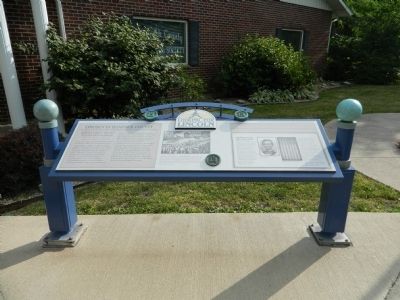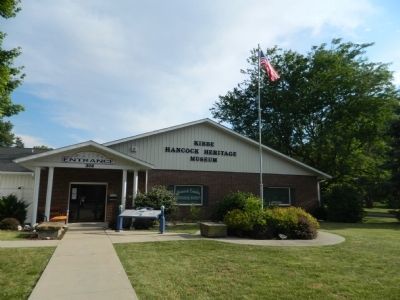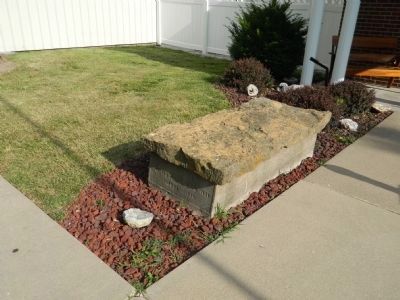Lincoln in Hancock County
Looking for Lincoln
Hancock County was off the beaten track for Abraham Lincoln. County residents were more familiar with his senatorial opponent, Stephen A. Douglas. In October 1858, Lincoln addressed an enthusiastic audience on the Carthage square. Afterward, he walked a few blocks to his local lodgings with boyhood friend Alexander Sympson. He then obliged those who followed him with spirited oratory from the doorway. The Wide Awakes, a political club, strongly supported Lincoln and engaged in ceremonial marches in honor of their chosen candidate. impressive maneuvers like the "worm fence march" can only be imagined, but their "split rail" routine was an obvious not to Lincoln's early days. Many able-bodied young men wanted to be counted among the popular Wide Awakes, whose Fountain Green contingency won first prize for having the largest best-disciplined marching unit in October 1860. Although he was from Springfield over a hundred miles away, Lincoln was optimistic during the 1858 senatorial election. He campaigned vigorously in Hancock County, where he had relatives and close friends. Although Lincoln won many popular votes, the final victory went to Stephen Douglas.
Among Lincoln's strongest supporters in Hancock County, the Wide Awakes were showy but functional. Local political sentiments, however, were strongly Democratic in this part of the state. The Wide Awakes served as official escort for prominent Republican speakers like Abraham Lincoln, and as a security force keeping order in the often unruly political climate of the era.
Rare Lincoln-related artifacts exhibited in the Kibbe Hancock heritage Museum include a Wide Awakes ceremonial torch and oilcloth uniform in red, white and blue, plus the famous Sympson Doorway where Lincoln spoke while staying at his friend;s residence in Carthage. This Lincoln ambrotype may have been taken in Carthage by traveling photographer Charley Frost in October 1858, showing Lincoln as he looked at the time of his speech in Hancock County.
This unusual eighteen-star flag aligned Illinois with anti-slavery states. it was sewn by local Carthage ladies and hung over a hotel balcony to show support for Lincoln when he addressed supporters on the Carthage courthouse square in 1858. Along with many other local antiquities, these artifacts document the importance of political pageantry in the lives of nineteenth-century Americans and attest to the fact that Lincoln had many loyal supporters in Hancock County.
Topics and series. This historical marker is listed in this topic list: Government & Politics. In addition, it is included in the Former U.S. Presidents: #16 Abraham Lincoln
Location. 40° 24.891′ N, 91° 8.359′ W. Marker is in Carthage, Illinois, in Hancock County. Marker is at the intersection of Walnut Street and Fayette Street on Walnut Street. Touch for map. Marker is in this post office area: Carthage IL 62321, United States of America. Touch for directions.
Other nearby markers. At least 8 other markers are within 11 miles of this marker, measured as the crow flies. Historic Carthage Jail (within shouting distance of this marker); The "Old Jail" (about 500 feet away, measured in a direct line); Lincoln's Failed Murder Case (approx. ¼ mile away); Lincoln's Carthage Speech (approx. ¼ mile away); Masonic Lodge Building of 1887 (approx. 0.3 miles away); Lincoln and Agriculture (approx. 0.3 miles away); Hamilton House (approx. 0.3 miles away); St. Simon Cemetery (approx. 11 miles away). Touch for a list and map of all markers in Carthage.
Credits. This page was last revised on August 2, 2020. It was originally submitted on July 26, 2012, by Bill Pfingsten of Bel Air, Maryland. This page has been viewed 560 times since then and 33 times this year. Photos: 1, 2, 3. submitted on July 26, 2012, by Bill Pfingsten of Bel Air, Maryland.


